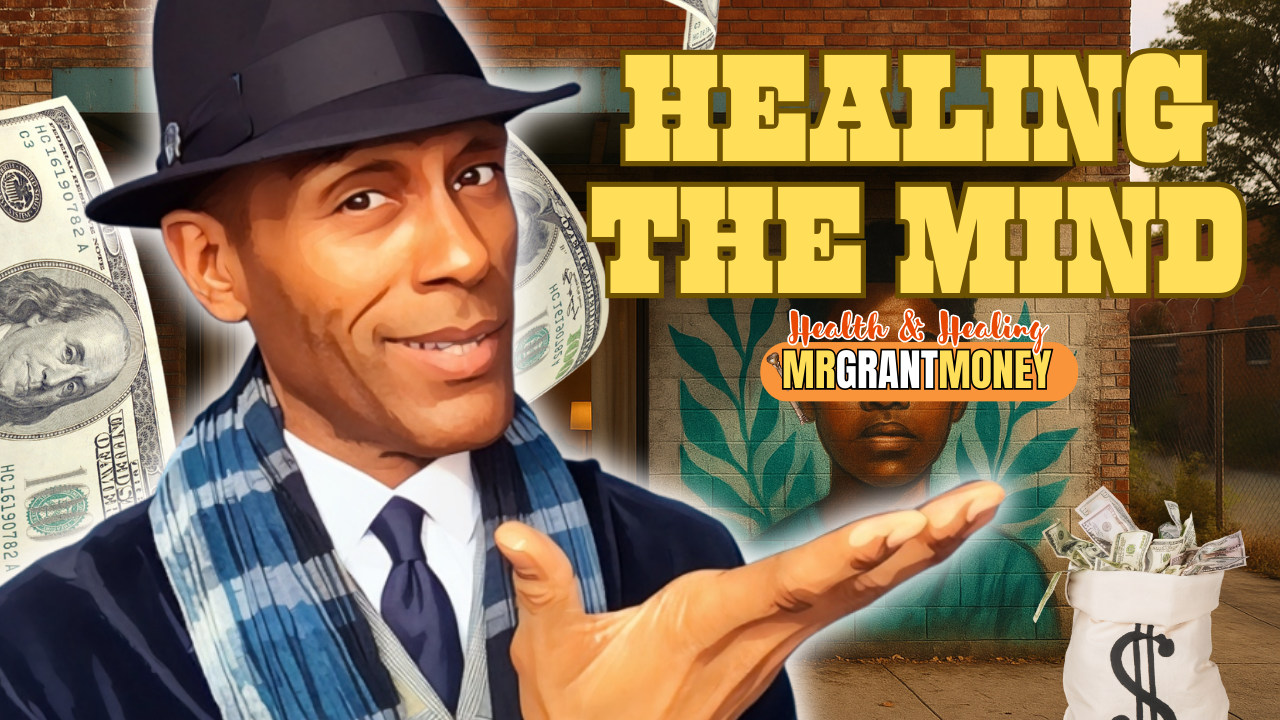The Bridge to the Future: Mr. Grant Money & the Smart Highway Project in Detroit

 Wednesday, July 2 – Detroit, MI 🇺🇸
Wednesday, July 2 – Detroit, MI 🇺🇸
Let me take you to a city with iron in its veins and reinvention in its bones. Detroit—where factories once roared like thunder, where music electrified the world, and where, if you ask me, the road to America’s future is being re-paved, literally. This is the story of how a stretch of highway became a symbol of rebirth, how asphalt turned into opportunity—and how I, Mr. Grant Money, got a call that would change the way Detroit moves.
We’re talking solar roads. Artificial intelligence whispering to traffic lights. Electric vehicle charging stations rising like spring flowers along concrete corridors. A city once built for horsepower now engineering highways smart enough to outthink human error. But before any of that, there was a vision—and a problem.
🌆 Setting the Scene
Detroit had come far since its bankruptcy headline days. Downtown was buzzing again. Startups were moving in, artists were painting over yesterday’s shadows. But drive a few miles out, and the cracks started to show—literally and figuratively.
Some neighborhoods were still choked by outdated roads that hadn’t seen real upgrades in decades. Traffic patterns ignored the rhythms of modern life. Accidents were up, emissions were high, and transit deserts made it nearly impossible for some residents to access jobs, schools, or health care. The city wasn’t failing—it was straining. Ready for the next leap, but missing the springboard.
Then came the spark. A new generation of Detroit leaders—civic innovators, local technologists, and gritty community groups—started whispering the same phrase over and over: smart mobility. Not just self-driving cars or fancy traffic lights, but a reimagined transportation system built on data, sustainability, and equity.
And they didn’t just want a plan. They wanted to build it now.
🎯 The Visionaries
It started in a room that smelled like cold coffee and urgency. Talia Jefferson, Detroit’s newly minted Chief of Mobility Innovation, stood at the whiteboard sketching a wild idea: a smart corridor that would connect the heart of Detroit to underserved communities on the East Side—roads powered by embedded solar panels, overlaid with sensors that tracked everything from traffic flow to air quality, and lined with EV chargers that could spark a whole new workforce.
Across from her sat the founders of Mileson Tech, a homegrown AI startup that had just piloted a dynamic signal control system in Kalamazoo. Their tech could adapt traffic lights in real-time based on congestion, pedestrian patterns, and even weather forecasts. It was nerdy, yes—but potentially revolutionary.
Then came the cavalry: Wayne State University’s data science team offered to model the corridor’s environmental and safety impact. A community org called Drive Forward, made up of residents who’d spent years dodging potholes and broken bus routes, offered stories, surveys, and support. They didn’t want another top-down solution. They wanted a seat at the table—and a say in the system.
Together, they had firepower. What they didn’t have? Funding. That’s when my phone rang.
💼 Enter Mr. Grant Money
When Talia got me on the line, I could hear it in her voice—equal parts vision and exhaustion. “We have the team. We have the plan. But the SMART Grants deadline is in four weeks, and we’re not ready.” Music to my ears.
See, anyone can fill out a grant application. But crafting a narrative that makes a federal reviewer sit up in their chair? That’s an art. That’s where I come in.
The first thing I did was tear their draft proposal to pieces—not out of cruelty, but strategy. It was technically sound, but emotionally hollow. It leaned on engineering jargon, not impact. It talked about sensors, but not about the mom who’d lost a son in a preventable car crash. It spoke of AI, but never mentioned the asthma rates in East Side neighborhoods choking on emissions.
What we needed was a story. A true one. One that made it clear this wasn’t just a Detroit project—it was an American project. A new blueprint for how cities could weave technology, justice, and speed into one coherent lane of progress.
✍️ Crafting the Winning Application
We rewrote the grant proposal like we were writing a screenplay. First, the stakes: Detroit at a crossroads, quite literally. Then the heroes: residents, startups, professors, public servants. Then the vision: a smart corridor that would reduce traffic fatalities by 35%, cut emissions by 28%, and install 47 EV charging ports along routes underserved by transit for decades.
But the real magic? We anchored it all in community. I pulled transcripts from town halls, quotes from Drive Forward’s youth organizers, testimony from small business owners who’d lose 20% of their weekly revenue just waiting out traffic jams. We ran predictive models that showed how faster transit would boost local employment.
Every paragraph sang with urgency. Every chart whispered credibility. Every data point bowed to a larger narrative: if Detroit could build this, anyone could.
We submitted it with six minutes to spare. Talia was still shaking.
📢 The Approval & Aftermath
The answer came not in a phone call, but an email subject line that simply read: “Congratulations.” I’ve seen a lot of wins in my life, but watching Talia open that message—her eyes going glassy, her voice cracking as she read the words aloud—that one hit different.
Detroit was awarded $36 million in SMART Grant funding, with an $8 million match from the state. And just like that, the Smart Highway Project became real.
Construction began on the first 6-mile stretch of corridor within 90 days. Solar tiles were installed alongside sensor-laced pavement that tracks heat levels, tire pressure anomalies, and sudden braking. Mileson’s AI-controlled traffic lights cut average wait times by 22% in the first two weeks.
But the real revolution? It wasn’t the tech. It was the ownership. Community members were hired to help implement the project, trained in maintaining charging stations and traffic tech. Local youth were brought into workshops to understand the infrastructure they’d soon inherit. This wasn’t innovation done to Detroit. It was innovation done by Detroit.
Other cities have started calling. Pittsburgh. St. Louis. Even parts of rural Georgia. They want in. They want to know how a rustbelt city turned itself into a mobility pioneer.
🔑 Grant Money Takeaways
If you’re reading this with a blueprint burning in your back pocket, let me say this loud and clear: you don’t have to wait for someone to hand you permission. Build the story. Build the coalition. Then call me.
Here’s what this project reminded me: Great infrastructure funding isn’t just about bridges and broadband—it’s about belief. Belief that the systems we’ve inherited can be reimagined. That the places left behind can leap ahead. That the people closest to the problem deserve to shape the solution.
Detroit didn’t ask for help. It asked for partnership. And it got it.
So, what’s your story? What’s your city waiting to become?
Until next time—
– Mr. Grant Money
💬 Discussion Questions
-
What do you think is the most important ingredient in winning large-scale infrastructure grants—data, vision, or community support? Why?
-
Have you seen any examples of “smart transportation” in your own city or travels? How did it improve (or not improve) the urban experience?
-
In your opinion, how can cities ensure that new technology like AI and solar highways actually benefit underserved communities?
-
What role should local residents play in designing and maintaining publicly funded infrastructure projects?
-
If you had $36 million to upgrade part of your city, what kind of project would you pursue—and how would you pitch it to funders?
📚 More Resources & Related Topics
🔎 Learn More by Topic
📌 Philanthropy Blog 📌 Grant Acquisition Blog 📌 Entrepreneurship Blog 📌 Financial Literacy Blog 📌 Scholarship Blog
📅 Seasonal & Inspirational Stories
📌 Thankfulness Stories 📌 Holiday Stories 📌 New Year Stories 📌 Halloween Stories 📌 Valentine’s Stories
🛍️ Shop, Stream, Connect
📌 Mr. Grant Money Store 📌 Mr. Grant Money Music 📌 YouTube Channel
💼 Professional Tools & Networks
📌 Grant Central USA 📌 Grant Writers Association
🔓 UNLOCK EXCLUSIVE TIPS WITH MR. GRANT MONEY!
We hate SPAM. We will never sell your information, for any reason.
















